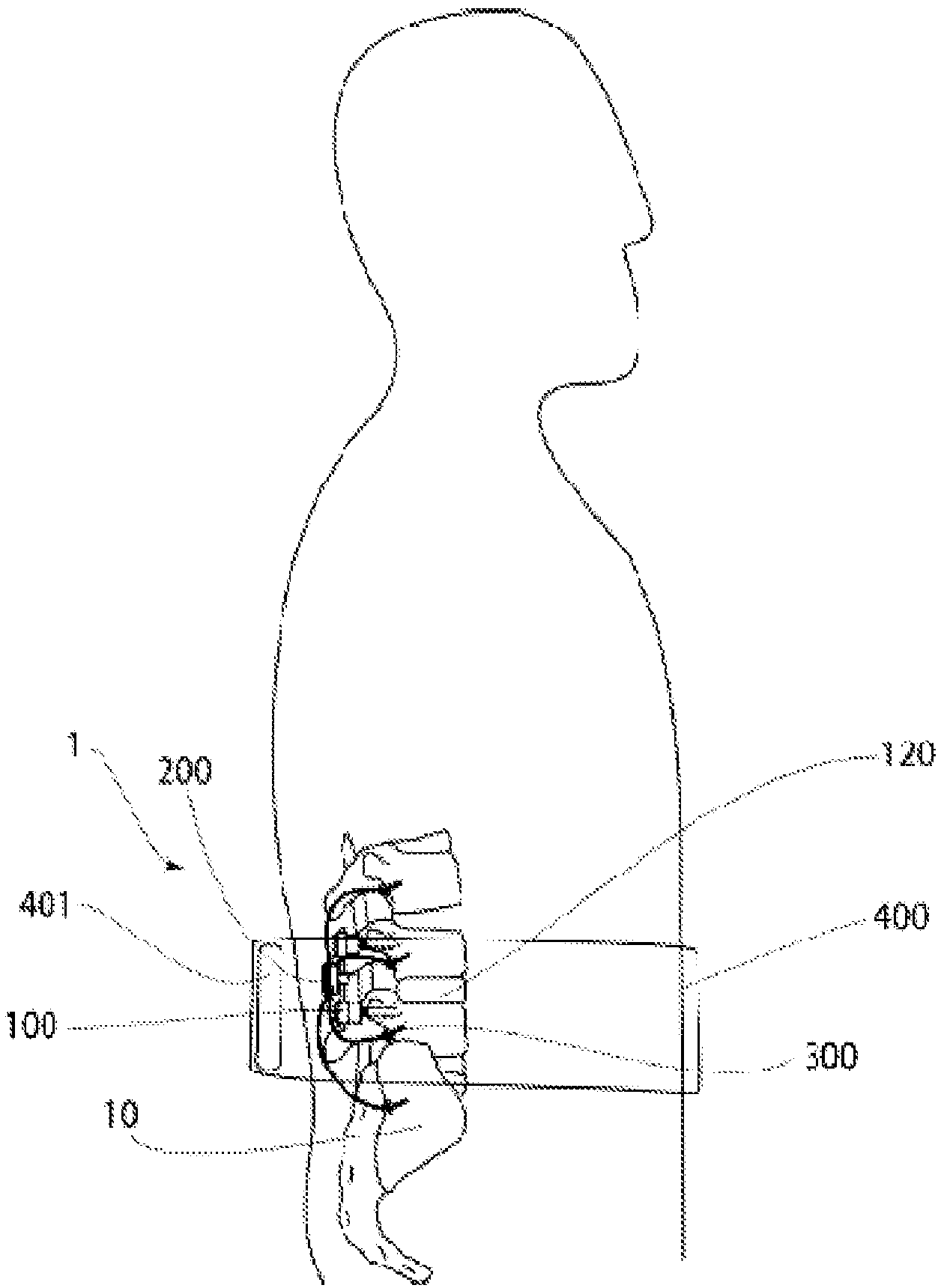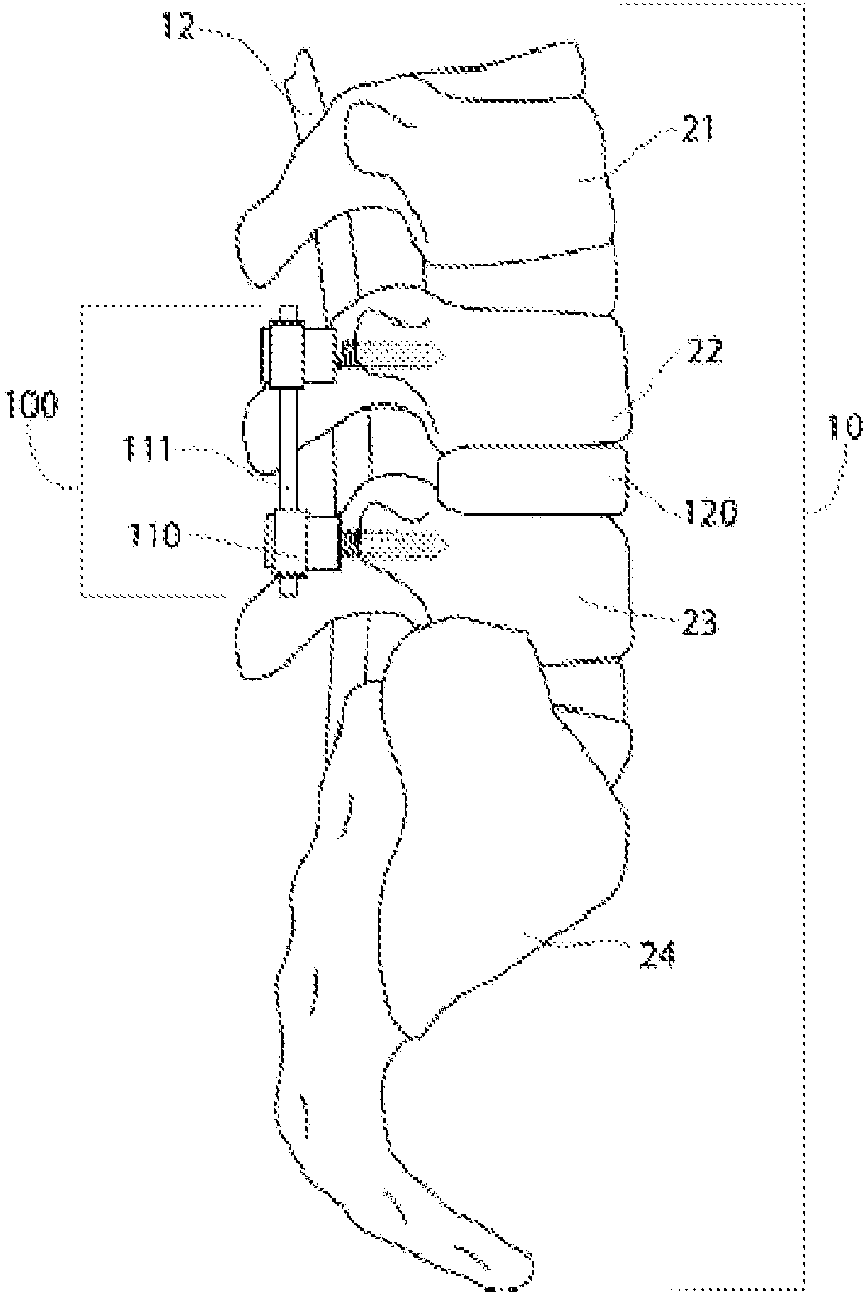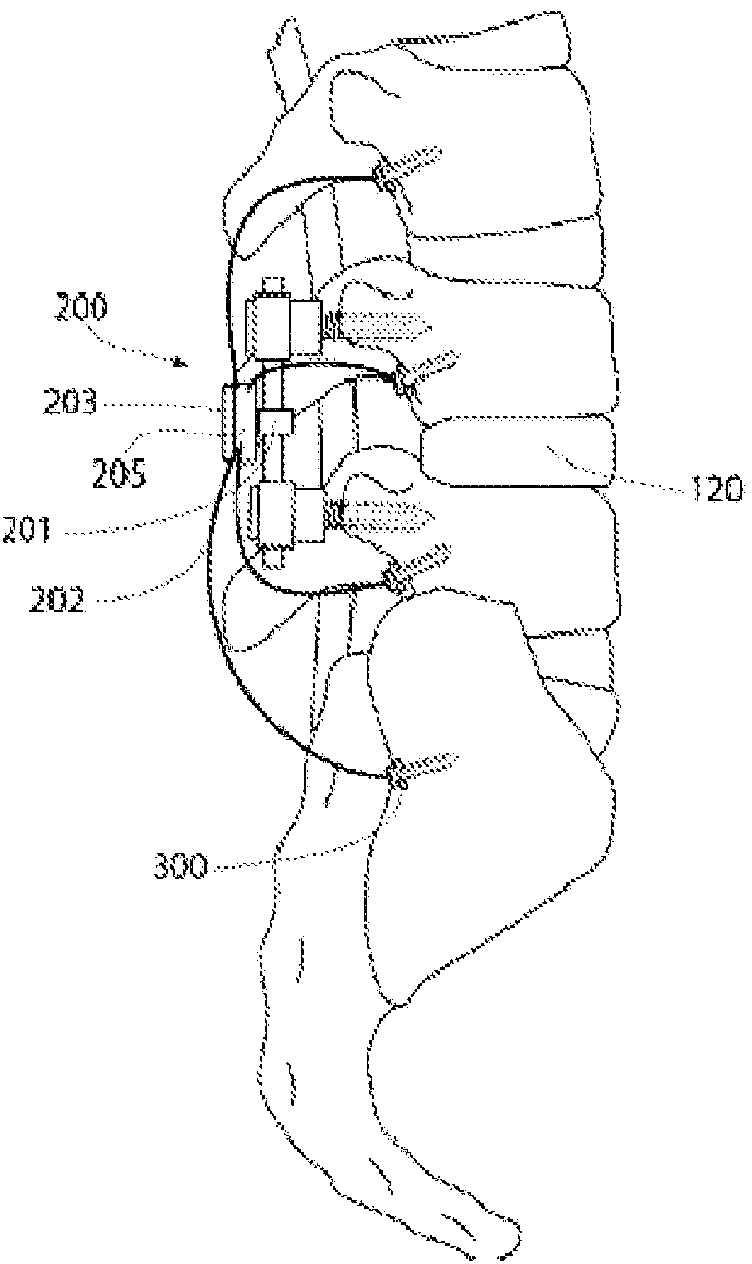A method and apparatus for an implantable inertial-based sensing system for real-time, in vivo detection of spinal pseudarthrosis and adjacent segment motion
A spine and external system technology, applied in the field of implantable biosensor systems, can solve problems such as inaccurate data of strain sensors
- Summary
- Abstract
- Description
- Claims
- Application Information
AI Technical Summary
Problems solved by technology
Method used
Image
Examples
Embodiment Construction
[0093] figure 1 is a side cross-sectional view of the fusion sensing system 1 in relation to the patient's spine 10 . In this embodiment, the fused sensing system 1 includes an implanted electronics assembly (generally indicated by reference numeral 200) coupled to a spinal stabilization hardware assembly (generally indicated by reference numeral 100) using an interbody cage 120 for Interbody fusion of the L4 and L5 discs of the lumbar spine; and, the external wearable system 400 . The fused sensing system 1 is coupled to a plurality of motion sensors 300 mounted into the spine 10, as best shown in Fig. 2b. The fusion sensing system 1 is powered via an induction coil by a reader 401 coupled with a wearable system 400 worn externally by the patient. Reader 401 also includes, for via Figure 11 and Figure 12The inductive coupling or inductive link between the inductive coils 441 , 541 in the communication to the device implanted in the electronic assembly 200 .
[0094] FI...
PUM
 Login to View More
Login to View More Abstract
Description
Claims
Application Information
 Login to View More
Login to View More - R&D
- Intellectual Property
- Life Sciences
- Materials
- Tech Scout
- Unparalleled Data Quality
- Higher Quality Content
- 60% Fewer Hallucinations
Browse by: Latest US Patents, China's latest patents, Technical Efficacy Thesaurus, Application Domain, Technology Topic, Popular Technical Reports.
© 2025 PatSnap. All rights reserved.Legal|Privacy policy|Modern Slavery Act Transparency Statement|Sitemap|About US| Contact US: help@patsnap.com



